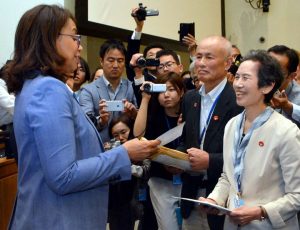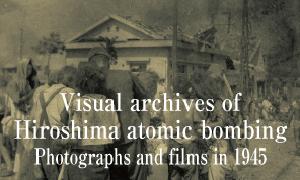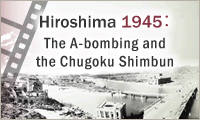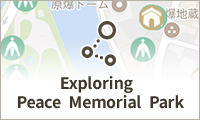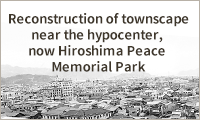Documenting Hiroshima 80 years after A-bombing: June 1972, Signatures calling for nuclear ban treaty delivered to U.N.
May 30, 2025
by Michio Shimotaka, Staff Writer, and Kyosuke Mizukawa, Senior Staff Writer
On June 16, 2017, Toshiyuki Mimaki, 83, an atomic bomb survivor living in Kitahiroshima-cho, and others visited the United Nations Headquarters in New York, where negotiations for the Treaty on the Prohibition of Nuclear Weapons were being conducted. They were dispatched by the Japan Confederation of A- and H-Bomb Sufferers Organizations (Nihon Hidankyo) to bring a list of 2,963,889 signatures collected through the Hibakusha Appeal, an international signature drive for the prohibition and abolition of nuclear weapons. The list was delivered to Elayne Whyte from Costa Rica, who was presiding over the conference that negotiated the adoption of the treaty.
“I thought the world might change once the treaty was made,” said Mr. Mimaki, who was then 75 and vice chair of the Hiroshima Prefectural Confederation of A-bomb Sufferers Organizations (Hiroshima Hidankyo). He went out in the streets to collect signatures with Sunao Tsuboi, chair of Hiroshima Hidankyo, and felt Mr. Tsuboi’s enthusiasm firsthand as he continued to advocate for nuclear abolition with a spirit of “Never Give Up” even in his 90s.
Japan did not participate
At the time of the atomic bombing by the U.S., Mr. Mimaki was 3 and lived in Imuro Village (now Asakita Ward, Hiroshima). As his father worked at Hiroshima Station, his mother took him into the city center to search for his father the day after the bombing where he was exposed to residual radiation. On August 6 every year, he listened to his mother talk about the event while watching the Peace Memorial Ceremony broadcast on television. In 2005, he became chair of a local hibakusha group. While working as a farmer and volunteer probation officer, he became vice chair of Hiroshima Hidankyo in 2014.
When he traveled to the U.S. carrying the weight of the feelings put into each signature, he had concerns. “How would I answer if they asked, ‘Your country’s government isn’t here. Why is that?’” The governments of Japan and other countries which rely on the U.S. nuclear umbrella, as well as nuclear weapon states, did not send their representatives to the negotiations.
Chair expresses gratitude
Receiving the list of signatures, Chairperson Whyte conveyed her gratitude. She said it was very moving and it reminded her that the suffering of nuclear weapons victims should be the starting point of disarmament efforts.
During the two-part conference that began in March, along with the governments of non-nuclear-weapon states promoting the treaty, the International Campaign to Abolish Nuclear Weapons (ICAN), a non-governmental organization (NGO) of anti-nuclear groups around the world, kept explaining to diplomats the necessity of prohibiting such weapons. Setsuko Thurlow, 93, a Hiroshima A-bomb survivor who collaborates with ICAN and resides in Toronto, Canada, addressed the conference within the NGO framework and expressed her hopes for the treaty’s adoption. Her speech was met with vigorous applause.
On July 7, the Treaty on the Prohibition of Nuclear Weapons was adopted with the support of 122 non-nuclear weapon states and regions.
Its preamble says, “Mindful of the unacceptable suffering of and harm caused to the victims of the use of nuclear weapons (hibakusha), as well as of those affected by the testing of nuclear weapons,” stressing the need to completely eliminate such weapons as “the only way to guarantee that nuclear weapons are never used again.” The treaty text prohibits, without exception, all acts leading to the existence of nuclear weapons, including development, possession, and use. The treaty also stipulates victim assistance and environmental remediation.
Nuclear weapon states and countries under the “nuclear umbrella” maintained their negative stance. On the other hand, hibakusha groups continued collecting signatures urging all nations to join the treaty. In October, Mr. Mimaki received encouraging news: ICAN was awarded the Nobel Peace Prize.
At the award ceremony held in Oslo, Norway, in December, Ms. Thurlow became the first atomic bomb survivor to deliver a speech. She said, “I want you to feel in this hall the presence of all those who perished in Hiroshima and Nagasaki,” adding, “Each person had a name.” Referring to Eiji Kishida, her nephew who was then 4 and died in the atomic bombing, she said, “Let this (treaty) be the beginning of the end of nuclear weapons.”
The treaty came into effect on January 22, 2021, after it was ratified by 50 nations and regions as prescribed. Seven Hiroshima A-bomb survivor groups began collecting signatures in the streets the 22nd of every odd-numbered month, urging Japan to join the treaty. Mr. Mimaki, who succeeded the late Mr. Tsuboi as chair of Hiroshima Hidankyo, continues to stand in the streets.
(Originally published on May 30, 2025)
On June 16, 2017, Toshiyuki Mimaki, 83, an atomic bomb survivor living in Kitahiroshima-cho, and others visited the United Nations Headquarters in New York, where negotiations for the Treaty on the Prohibition of Nuclear Weapons were being conducted. They were dispatched by the Japan Confederation of A- and H-Bomb Sufferers Organizations (Nihon Hidankyo) to bring a list of 2,963,889 signatures collected through the Hibakusha Appeal, an international signature drive for the prohibition and abolition of nuclear weapons. The list was delivered to Elayne Whyte from Costa Rica, who was presiding over the conference that negotiated the adoption of the treaty.
“I thought the world might change once the treaty was made,” said Mr. Mimaki, who was then 75 and vice chair of the Hiroshima Prefectural Confederation of A-bomb Sufferers Organizations (Hiroshima Hidankyo). He went out in the streets to collect signatures with Sunao Tsuboi, chair of Hiroshima Hidankyo, and felt Mr. Tsuboi’s enthusiasm firsthand as he continued to advocate for nuclear abolition with a spirit of “Never Give Up” even in his 90s.
Japan did not participate
At the time of the atomic bombing by the U.S., Mr. Mimaki was 3 and lived in Imuro Village (now Asakita Ward, Hiroshima). As his father worked at Hiroshima Station, his mother took him into the city center to search for his father the day after the bombing where he was exposed to residual radiation. On August 6 every year, he listened to his mother talk about the event while watching the Peace Memorial Ceremony broadcast on television. In 2005, he became chair of a local hibakusha group. While working as a farmer and volunteer probation officer, he became vice chair of Hiroshima Hidankyo in 2014.
When he traveled to the U.S. carrying the weight of the feelings put into each signature, he had concerns. “How would I answer if they asked, ‘Your country’s government isn’t here. Why is that?’” The governments of Japan and other countries which rely on the U.S. nuclear umbrella, as well as nuclear weapon states, did not send their representatives to the negotiations.
Chair expresses gratitude
Receiving the list of signatures, Chairperson Whyte conveyed her gratitude. She said it was very moving and it reminded her that the suffering of nuclear weapons victims should be the starting point of disarmament efforts.
During the two-part conference that began in March, along with the governments of non-nuclear-weapon states promoting the treaty, the International Campaign to Abolish Nuclear Weapons (ICAN), a non-governmental organization (NGO) of anti-nuclear groups around the world, kept explaining to diplomats the necessity of prohibiting such weapons. Setsuko Thurlow, 93, a Hiroshima A-bomb survivor who collaborates with ICAN and resides in Toronto, Canada, addressed the conference within the NGO framework and expressed her hopes for the treaty’s adoption. Her speech was met with vigorous applause.
On July 7, the Treaty on the Prohibition of Nuclear Weapons was adopted with the support of 122 non-nuclear weapon states and regions.
Its preamble says, “Mindful of the unacceptable suffering of and harm caused to the victims of the use of nuclear weapons (hibakusha), as well as of those affected by the testing of nuclear weapons,” stressing the need to completely eliminate such weapons as “the only way to guarantee that nuclear weapons are never used again.” The treaty text prohibits, without exception, all acts leading to the existence of nuclear weapons, including development, possession, and use. The treaty also stipulates victim assistance and environmental remediation.
Nuclear weapon states and countries under the “nuclear umbrella” maintained their negative stance. On the other hand, hibakusha groups continued collecting signatures urging all nations to join the treaty. In October, Mr. Mimaki received encouraging news: ICAN was awarded the Nobel Peace Prize.
At the award ceremony held in Oslo, Norway, in December, Ms. Thurlow became the first atomic bomb survivor to deliver a speech. She said, “I want you to feel in this hall the presence of all those who perished in Hiroshima and Nagasaki,” adding, “Each person had a name.” Referring to Eiji Kishida, her nephew who was then 4 and died in the atomic bombing, she said, “Let this (treaty) be the beginning of the end of nuclear weapons.”
The treaty came into effect on January 22, 2021, after it was ratified by 50 nations and regions as prescribed. Seven Hiroshima A-bomb survivor groups began collecting signatures in the streets the 22nd of every odd-numbered month, urging Japan to join the treaty. Mr. Mimaki, who succeeded the late Mr. Tsuboi as chair of Hiroshima Hidankyo, continues to stand in the streets.
(Originally published on May 30, 2025)

